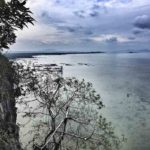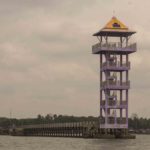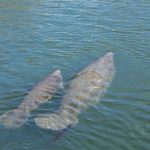Si Kao, in the southern Thailand region of Trang, is a coastal town around an hour's drive south of Phuket. And it's famous for its dugong population. In fact, dugongs are the main tourist attraction here, but sadly, their numbers are decreasing. So, locals have decided to do something about saving the dugongs of Si Kao.
The dugongs of Si Kao
Much like dugong populations elsewhere, Si Kao's dugongs are losing habitat to ever-increasing coastal development. The seagrass beds on which they graze are disappearing and busy waterways increase the chance of net entrapment and boat strikes, so it's a struggle for survival. Si Kao's dugongs are not winning the battle, with latest population estimates as low as 150.
A few marine-conservation groups are doing what they can to save this dwindling population, and they now have assistance from Anantara Si Kao Resort. As well as supporting local conservation efforts, the resort's sustainability manager, Mark Isenstadt, takes guests on a "Dugong Experience" day trip, in which they learn all about dugongs, their habitat, behavior, threats and what we can all do to help.
The long-tail boat tour starts with a lesson about seagrass — a lot more interesting than it sounds because Mark is a passionate storyteller. Seagrass forms the main dietary component for dugongs, but sadly the world's seagrass beds are disappearing due to coastal development. But that's not the only threat to dugongs, Mark explains. Many become ensnared in fishing nets or suffer boat injuries in the busy waterways that surround Trang and the islands in the southern Andaman Sea.







Marine reserve tour
The tour next visits a marine reserve at Koh Libong, where you can see the 'sea cows' that once fooled short-sighted sailors into thinking they'd seen a mermaid. The boat idles slowly through the marine reserve as the keen-eyed skipper looks out for dugongs.
There used to be plenty of dugong-spotting tours here, and visitors will see evidence of their former abundance on the bay's long jetty. At its end is a tall, crumbling tower, now abandoned, on a jetty that is no longer in use.
After an hour or so of dugong spotting, the tour takes you to a small fishing village for lunch before the next part of this adventure, this time using another traditional Thai form of transport, a tuk tuk. You'll head to the base of Point Dugongs, a tall limestone karst with a viewing platform at the top, which you reach by climbing through a series of caves. There aren't many places you can climb a mountain from the inside and it's an adventure in itself. You'll pass through caverns, making your way to the top on narrow paths that wind around large stalagmites and stalactites.
The view from the top is spectacular — perfect for dugong spotting— and it shouldn't be long before you spot one or two in the clear water far below.
The future of the marine reserve
While it's an amazing view, it's also clear from this height that the marine reserve is too small. Local conservation groups are trying to increase the area, and a big part of the fight is educating local villagers on the benefits. Anantara is helping with this too. The resort recently opened the Dugong Conservation and Education Center. Proceeds from the resort's dugong tours contribute to the center's development and upkeep.
The center will educate Anantara guests, staff, and (most importantly) the local community about dugongs and their environment, promoting an understanding of how important this precious ecosystem is to everyone from nature-lovers to local fishermen.
Importantly, the center will offer a laboratory and research space for scientists studying how factors such as changing weather patterns and urbanization impact wildlife (and communities) that rely on the sea for sustenance.
Visitors to the center can help rebuild and strengthen the surrounding fragile coastal environment by planting seagrass, which stabilizes the sea floor by holding sediment down and breaking waves as they head to shore. This, in turn, prevents erosion, improves water quality, and creates a haven for sea cucumbers, sea urchins and crabs. And, of course, the seagrass feeds the dugongs, along with almost 70 percent of the sea creatures in the region. If you're in Si Kao, stop by and give the dugongs a hand.
The post Saving the Dugongs of Si Kao appeared first on Scuba Diver Life.
from Scuba Diver Life https://ift.tt/2Jfskcs
No comments:
Post a Comment